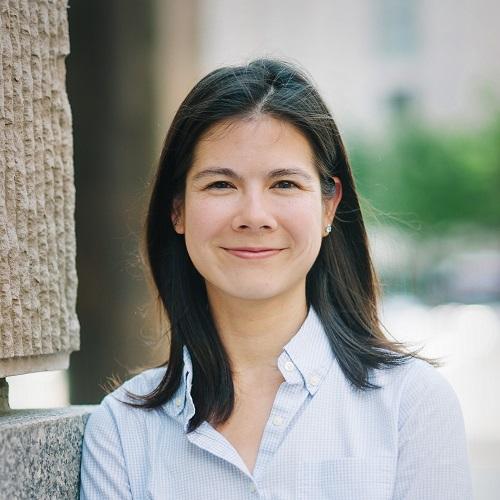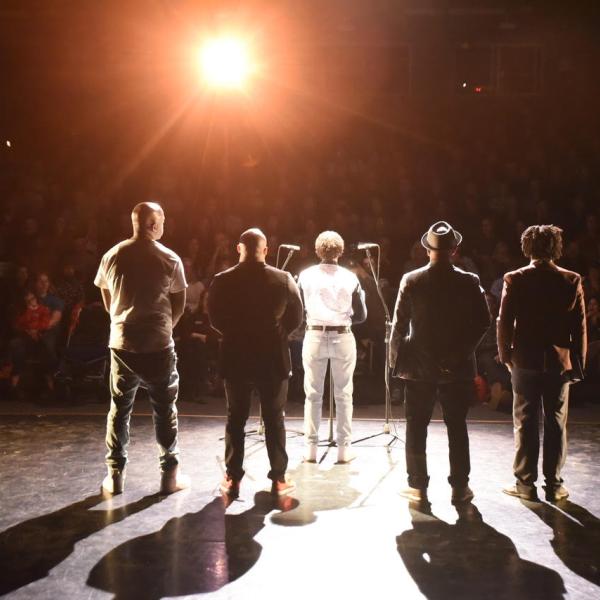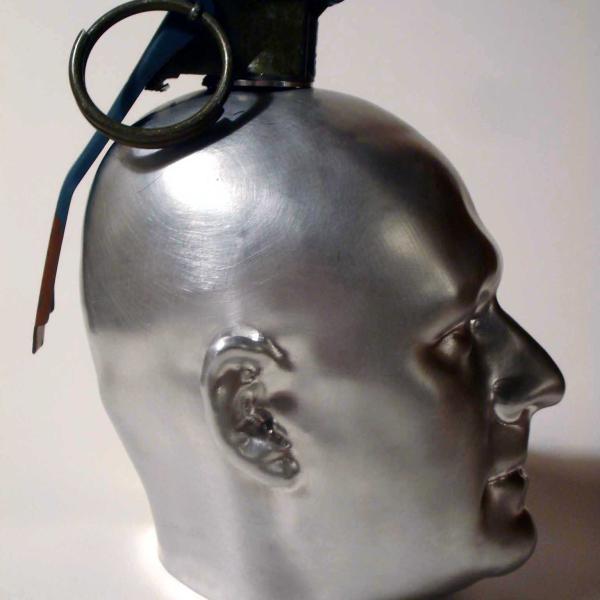The Artful Life Questionnaire: Melissa Menzer (Washington, DC)

Melissa Menzer. Photo by Carrie Holbo Photography
What we know for sure: We all have a story, and engaging with the arts helps all of us to tell our own stories on our own terms. We also know that there are ways to engage with the arts other than in formal cultural venues, and that sometimes it is more about the process of art making than it is about the end product. We also know that living an artful life, which is to say, living a life in which the arts and arts engagement are a priority means different things to different people based on their own interests, their communities, and many other factors, including equitable access. The Artful Life Questionnaire celebrates the diversity of ways we can make the arts a part of our lives, and, hopefully, inspires and encourages us to live our own unique versions of an artful life. In today’s edition of the questionnaire, we’re speaking with Melissa Menzer, PhD., Senior Program Analyst in the NEA Office of Research and Analysis.
NEA: Please introduce yourself.
MELISSA MENZER: Hi, I’m Melissa Menzer, and I am half Japanese, half European (mix of German and Czech). By the time I was a teenager, I had lived in three continents and four countries, including a couple of U.S. states. I’ve lived in the D.C. area for a little over 23 years now, the longest I have ever lived anywhere; the closest second was five years in Japan. I majored in both Psychology and Studio Art in college. Then I went on to get a doctoral degree in human development, focusing specifically on child and adolescent development. All of my degrees came from the University of Maryland (Go Terps!).
Professionally, I am a program analyst in the Office of Research & Analysis at the National Endowment for the Arts. I’ve been at the NEA for a little over 11 years. My primary role is a program manager for our various research awards programs, including Research Grants in the Arts and NEA Research Labs. These grant programs support research studies and projects focused on understanding the value of the arts as well as the impact the arts have for individuals and communities. It is such an interdisciplinary program that one minute I could be talking to an economist about arts workers and the Gross Domestic Product, and the next I could be talking to a psychologist who is interested in looking at the direct benefits of an arts intervention for educational or health outcomes for individuals. I share the stage in managing the research awards programs with my wonderful colleagues Sunil Iyengar and Alexzandra Fogle.
I could also talk about many of the other cool things I have been involved in over the years, like survey methodology and data analysis activities related to the Survey for Public Participation in the Arts, general administrative and grants management support for the Sound Health Network, and also amplifying the work of our research grantees and other arts researchers through conferences, special journal issues, and reports. But I think I’ll stop there.
NEA: Do you have a current art practice or a way of regularly engaging with the arts?
MENZER: When I was in college I primarily focused on painting, drawing, and printmaking, and I also separately interned at Pyramid Atlantic Art Center where I learned papermaking and bookmaking. These days I like to think of myself as more of an arts appreciator than an arts creator. That said, I’ve been contemplating starting an arts project that incorporates relief printmaking and book arts. Ask me again in a few months to see if I have made any progress on this budding idea. If I say it out loud, perhaps it will come to fruition.
NEA: What are five words that come to mind when you think about the idea of living an artful life?
MENZER: Creativity, acceptance, knowledge, empathy, healing.
NEA: Pick just one of those words and expand on how you see it as part of living an artful life.
MENZER: This is a tough one because they are all so intertwined. I’ll have to go with empathy. Art is one of those things that can evoke so many different emotions, even simultaneously. I can’t count how many times I have experienced art and felt like I can really feel what is happening, that I am right there with the artist or the subject matter. Happiness, sadness, anger, laughter. To engage with art is to be human.
NEA: Where do you currently live, and what are some of the ways that your community tells its story through the arts or through creative expression?
MENZER: I live in the heart of Washington, D.C. There are arts and creative things in so many spaces. There is the national-level arts side of D.C., which has the John F. Kennedy Center for the Performing Arts, the National Gallery of Art, all the Smithsonian museums and institutes, and other national-level venues and institutions, including the National Mall, where many large-scale festivals are held. These institutions mostly showcase artists from all over the world, which is an amazing amenity that tourists and locals alike can share.
But when it comes down to the local level though, I think the arts in public spaces is a particular way that Washington, D.C. reflects the lives of people who live here. There are tons of venues and spaces that showcase local artists. A touchstone of the D.C. area is Meridian Hill Park (known to D.C. locals as “Malcolm X Park”). On a beautiful weekend, you can go there to participate and listen to the famous drum circle. The drums are so resonating you can hear them blocks away. And the epitome of the welcoming vibe of D.C. is that anyone can come to the drum circle and participate! You can also visit just to observe and picnic. Everyone is there to have a good time and keep the fun, festivities, and arts alive.
Another cornerstone of the D.C. arts scene is the Fort Reno-D.C. Summer Concert Series. Here, musicians and music enthusiasts can picnic and enjoy free, family-friendly concerts by local musicians during the summer. Acts both young and old have a chance to share the stage. I’ve had a number of friends’ bands play in this series over the years, and its always a good time.
Murals also show the culture of D.C. You can find some pretty cool murals scattered throughout the city, in alley ways, under bridges, on the sides of restaurant and residential buildings, and other spaces. I have a few favorites but I won’t share what/where they are other than to say watermelons, a long last name, votes for women, and #2 pencils. #IYKYK.
NEA: How do you think that living an artful life can improve the well-being of your community?
MENZER: You are talking to a data and research nerd here! I’ll keep this short: See all the resources and reports we share on our Research webpage: https://www.arts.gov/impact/research
NEA: Is there a particular place in your neighborhood that is a creative touchstone for you?
MENZER I don’t think there is a particular place, but a set of places. When it comes to supporting the arts, I love supporting friends and family in their creative pursuits. I enjoy attending venues and house shows where friends are performing music or dance, sharing their own poetry, spinning a DJ set, or showing their artwork. Those are the events and settings that I really enjoy. The smaller, more intimate spaces where people can share a part of themselves that is meaningful to them.
NEA: What’s your favorite informal way or space to engage with arts and culture?
MENZER: I want to first premise this by saying I don’t think this is an informal way or space to engage with arts and culture, because what I am going to describe takes a lot of work to pull off for the organizers.
One event that I look forward to every year is a small, private music and camping festival that some friends of mine host. My friends got married several years ago and built their own camping music festival around their wedding. They invited all their friends and family to camp alongside them for the weekend, and they also had many of their musically-inclined friends and family perform, sing, and DJ across the whole weekend. To this day, they have hosted this festival annually (except for when we weren’t able to gather due to COVID-19!). Friends far and wide come to the D.C. area just for this event, which makes it even more special. What a great way to celebrate life, friendship, family, and music.
NEA: If you didn't work in the arts, do you think the arts would still be a part of your life?
MENZER: Probably more so! I like to joke that the arts are my break from psychology, and psychology is my break from the arts. But it’s not really a joke because it is true, at least for me.
NEA: Can you share an arts experience or moment of arts engagement that has had an identifiable impact on your life?
MENZER: Well, it is sort of a full circle moment. Remember when I said I have college degrees in both studio art and psychology? At the time I got my degrees, I had always thought the two worlds were so different; how could they ever really intertwine as a career? And so I ended up going to graduate school for the psychology part, with the arts as my hobby. When I was on the job market after getting my doctorate, a job opportunity (this one!) came up that perfectly melded the two worlds together. It completely blew my mind that this type of job existed. I feel so fortunate to have the job that I have now and to be at that intersection of arts and science. I get a front row seat to all the cutting-edge research, how cool is that!




